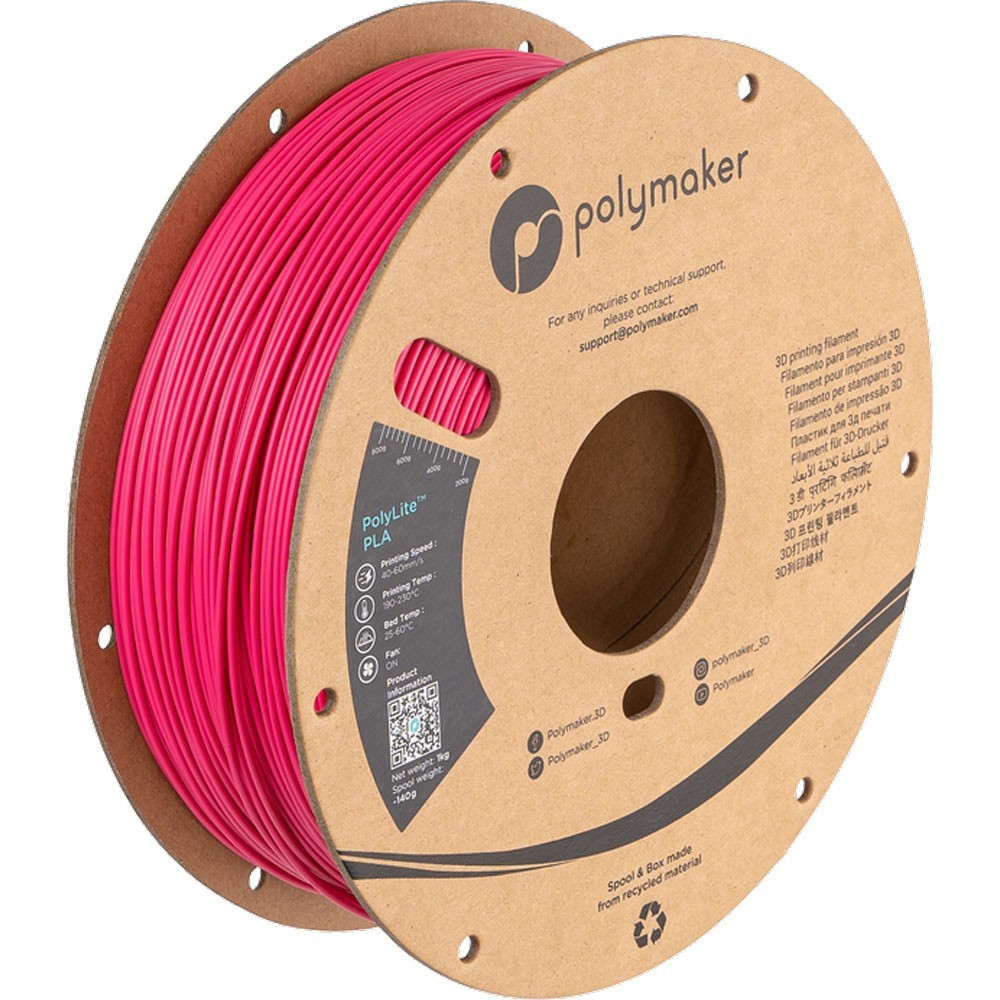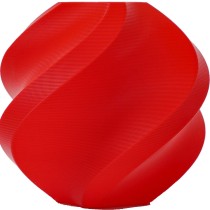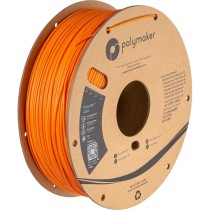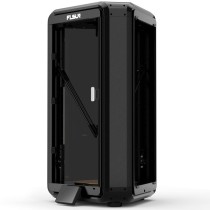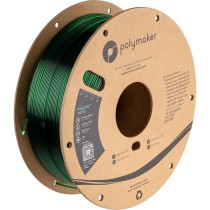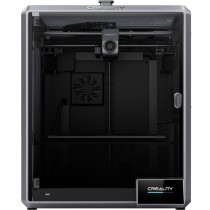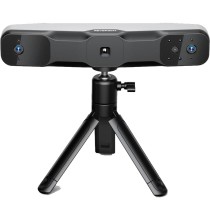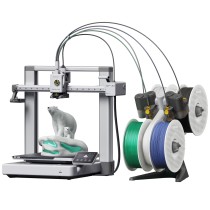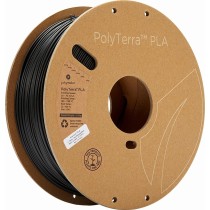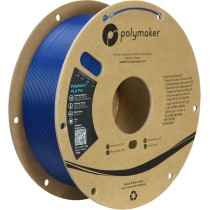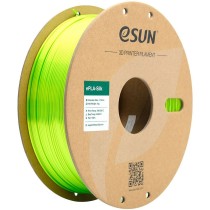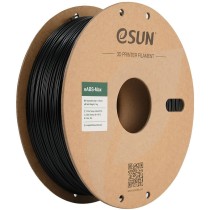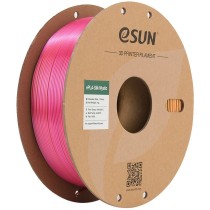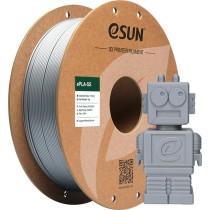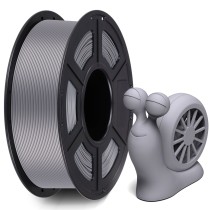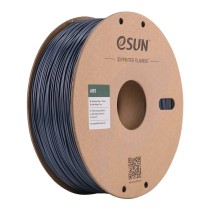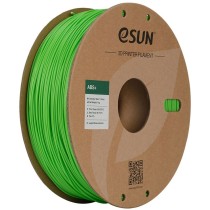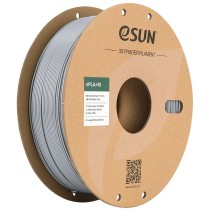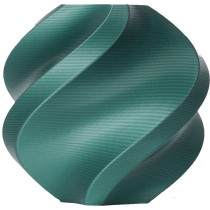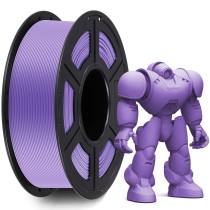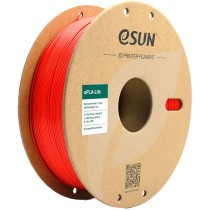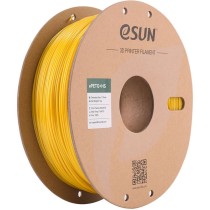Polymaker PolyLite PLA Filament
Polymaker PolyLite PLA Filament has emerged as a favorite among 3D printing enthusiasts and professionals alike. Known for its excellent print quality and ease of use, this filament offers a range of features that make it a go-to choice for a variety of 3D printing projects. In this article, we'll delve into the key properties of Polymaker PolyLite PLA Filament, including its density, mechanical properties, and optimal printing conditions, to help you achieve the best possible results with your 3D printer.
Key Properties of Polymaker PolyLite PLA Filament
Density: 1.17 g/cm³
The density of Polymaker PolyLite PLA Filament is 1.17 g/cm³, making it a lightweight yet sturdy material. This density ensures that printed objects are strong and durable while maintaining a relatively low weight, which is ideal for a wide range of applications, from prototyping to functional parts.
Elongation at Break: 1.90 ± 0.21%
With an elongation at break of 1.90 ± 0.21%, Polymaker PolyLite PLA Filament exhibits a modest level of flexibility. This property means that while the material is primarily rigid, it can endure slight bending and stretching before breaking, which can be advantageous for parts that may experience minor stress during use.
Charpy Impact Strength: 2.68 ± 0.16 kJ/m²
The Charpy impact strength of Polymaker PolyLite PLA Filament stands at 2.68 ± 0.16 kJ/m². This measurement reflects the filament's ability to absorb energy during impact, indicating good toughness. This level of impact strength makes it suitable for creating objects that need to withstand occasional bumps or drops.
Tensile Strength: 46.6 ± 0.9 MPa
Tensile strength is a critical factor in determining the filament's ability to resist breaking under tension. Polymaker PolyLite PLA Filament boasts a tensile strength of 46.6 ± 0.9 MPa, making it a robust choice for parts that need to endure pulling or stretching forces.
Optimal Printing Conditions for Polymaker PolyLite PLA Filament
To achieve the best results with Polymaker PolyLite PLA Filament, it's essential to adhere to the recommended printing conditions. Here are the optimal settings:
Nozzle Temperature: 190 – 230°C
Polymaker PolyLite PLA Filament performs well within a nozzle temperature range of 190 to 230°C. This broad temperature range provides flexibility and allows users to fine-tune their printer settings based on specific project requirements and printer capabilities. For beginners, starting at around 200°C is a good baseline, while experienced users can adjust within the range to find the sweet spot for their particular setup.
Build Plate Temperature: 25 - 60°C
The recommended build plate temperature for Polymaker PolyLite PLA Filament is between 25 and 60°C. A heated build plate helps prevent warping and ensures better adhesion of the first few layers. For most prints, setting the build plate temperature to around 50°C should suffice, but adjusting within the range can help optimize adhesion and reduce issues related to warping.
Printing Speed: 40-60mm/s
For optimal print quality, a printing speed of 40-60mm/s is recommended. This speed range balances quality and efficiency, allowing for precise layer deposition without sacrificing too much print time. Slower speeds within this range can enhance detail and reduce defects, while faster speeds can help complete larger prints more quickly without significantly compromising quality.
Advantages of Using Polymaker PolyLite PLA Filament
- Ease of Use: Polymaker PolyLite PLA Filament is known for its user-friendly nature. It is easy to print with and does not require specialized equipment or extensive tweaking, making it suitable for both beginners and experienced users.
- High-Quality Prints: With its excellent mechanical properties and consistent diameter, this filament produces high-quality prints with smooth finishes and fine details. The results are reliable and visually appealing, making it ideal for a wide range of applications.
- Eco-Friendly: PLA (Polylactic Acid) is derived from renewable resources such as corn starch or sugarcane. It is biodegradable under industrial composting conditions, making it a more environmentally friendly choice compared to traditional petroleum-based plastics.
- Versatility: Polymaker PolyLite PLA Filament is versatile and can be used for various applications, including prototypes, educational projects, decorative items, and functional parts. Its balance of strength, flexibility, and ease of use makes it suitable for a wide range of 3D printing needs.
Tips for Successful Printing with Polymaker PolyLite PLA Filament
- Proper Storage: PLA filament can absorb moisture from the air, which can negatively affect print quality. Store your filament in a dry place, preferably in a sealed container with desiccant packs to maintain its quality.
- Bed Adhesion: Ensuring good bed adhesion is crucial for successful prints. Using a heated bed, applying a thin layer of glue stick, or using blue painter's tape can help improve adhesion and prevent warping.
- Layer Cooling: Proper cooling is essential for PLA prints, especially for detailed and overhanging sections. Ensure your printer's cooling fan is functioning correctly and adjust fan speeds as needed to achieve the best results.
- Calibration: Regularly calibrating your printer, including the bed level and nozzle height, can significantly improve print quality. Take the time to perform these calibrations to avoid common printing issues such as uneven layers and poor adhesion.
Conclusion
Polymaker PolyLite PLA Filament is an excellent choice for 3D printing enthusiasts looking for a reliable, high-quality material. Its balanced mechanical properties, ease of use, and eco-friendly nature make it a standout option in the world of 3D printing filaments. By following the recommended printing conditions and best practices, you can achieve exceptional results with Polymaker PolyLite PLA Filament, whether you're a beginner or a seasoned pro. Happy printing!
